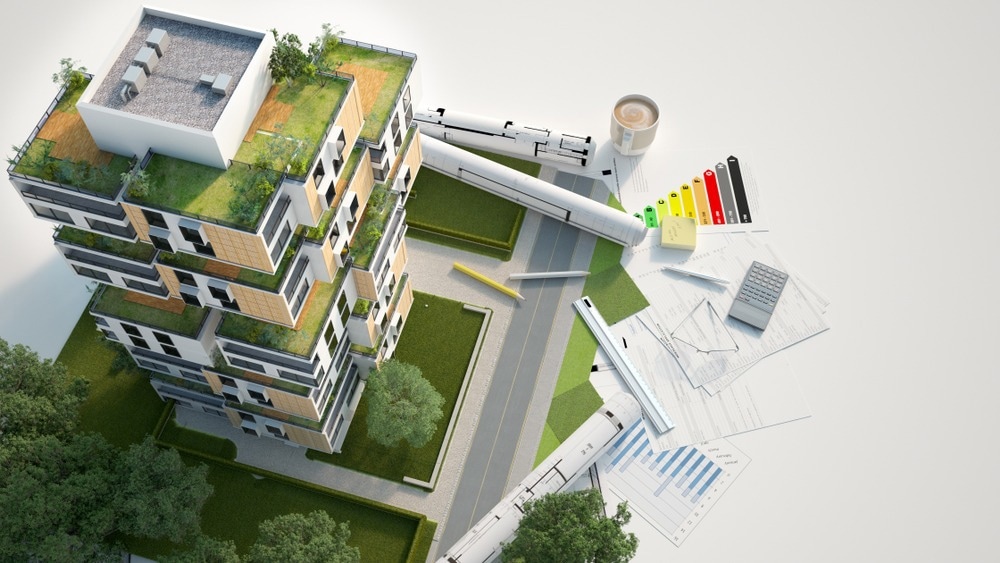Can Nanotechnology Help to Advance Architecture?
In a recently published review in the journal Materials Today, different avenues of nanotechnology in architecture, as well as the challenges in employing these techniques and the relevant opportunities, were explored.

The architecture and production industry accounts for around half of the world's power consumption and a quarter of the planet's greenhouse gas emissions. Globally approved and extensively used construction practices have direct adverse effects on the environment, excessive resource depletion, antagonizing public health issues, and environmental degradation.
A Brief Review of Nanomaterials and Nanotechnology
Any substance having a particle size of less than 100 nm in at least one dimension is considered a nanomaterial.
Nanotechnology, which involves manipulating matter at the atomic and molecular level to produce materials with remarkably varied and novel properties, is a quickly developing field of study with enormous potential in a wide range of industries, including construction, electronics, healthcare, and building materials. It has the potential to completely transform several fields of research, development, and industrial applications.
Beyond nanoscience, nanotechnology attempts to use the properties of innovative nanomaterials to enhance a wide range of applications.
Construction – An Industry in Need of Nanotechnology
The authors reviewed relevant papers to determine some of the most likely applications of nanotechnology in architecture, such as utilizing carbon nanotubes, nanoparticles, and nanofibers. Often, these nanomaterials are used to enhance the durability and quality of construction materials while lowering any associated pollution.
Incorporating hybrids such as carbon nanotubes and titanium dioxide as nanoparticles can effectively improve the mechanical properties of many construction materials. Glass, concrete, and steel are just a few of the materials that may be improved with the help of nanotechnology.
Nanotechnology in Architectural Projects
Concrete is the most commonly used building material in the construction industry. As concrete is utilized in the structure of buildings, much interest is placed in refining its qualities. By incorporating substances like carbon nanotubes and nano-silica, physical properties of structures such as strength, conductive properties, and durability can be improved.
Nanotechnology can provide a clever remedy for concrete product corrosion by creating coatings that respond to external factors in a way that can either be corrected or avoided. Recent studies on the application of versatile materials, such as carbon nanotubes and nanoparticles, demonstrate that these elements increase the compressive strength and flexibility of cement mortar samples.
Virtues in Nanotechnological Architecture
The potential of nanostructures to repair damaged structural surfaces on their own is extremely advantageous to the construction sector. Nanosensors are used in constructions to aid in the prediction of current problems.
Microcapsules rupture releases a healing ingredient that gradually repairs the damaged concrete mix. The healing ingredient fills the fracture by capillary action. Consequent polymerization helps fill the cracks.
Applications in Energy Conservation
The ability to absorb carbon pollution into the environment has been developed using nanotechnology. Energy may be produced and stored using nanotechnology both in and out of these structures, making it possible to produce new power sources and enhance the amount of currently available energy.
Nanotechnology can also be used to create extremely thin layers with cleaning and color-changing capabilities to cut down on pollution and energy use.
Challenges and Implications of the Research
The biggest problem with using nanotechnology in architecture and building is how they are currently being developed and adapted owing to economic factors. With increased commercial use, exposure to these nanomaterials also increases, which could have negative consequences.
Further progress can be made in scientific endeavors by governments, research and development organizations, manufacturers, and other businesses by collaborating on several levels to implement the new nanotechnological applications, especially in architecture.
1st Edition of International Conference on Advanced Nanomaterials and Nanotechnology
15-16 December 2022 | Dubai, United Arab Emirates
Visit : hnology-conferences.sciencefather.com #Nanocomposites #Nanomagnetism #NanomaterialsforEnergy #Nanobiotechnology #Nanotheranostics #Nanomaterials #Nanotechnology
Comments
Post a Comment